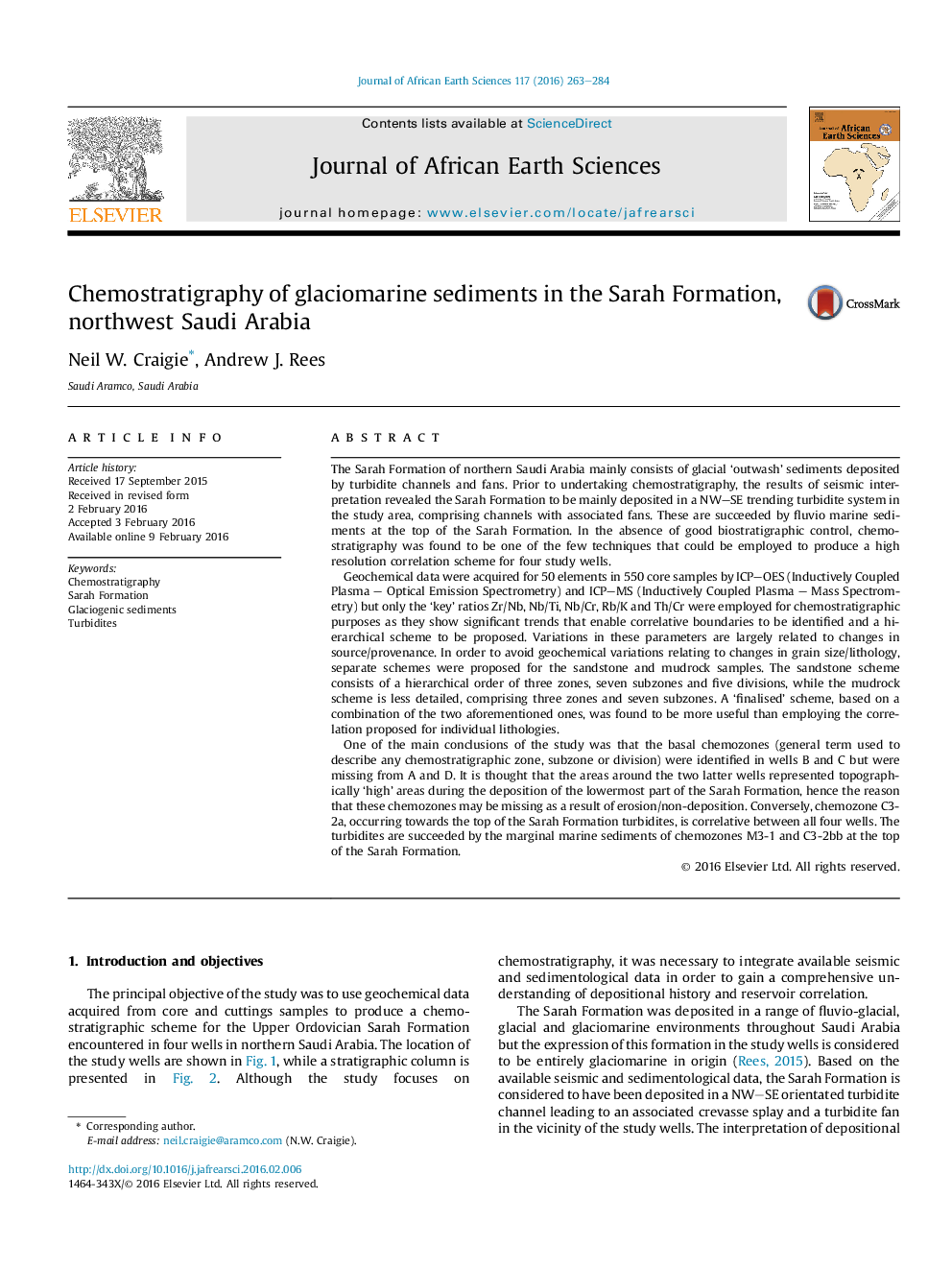| کد مقاله | کد نشریه | سال انتشار | مقاله انگلیسی | نسخه تمام متن |
|---|---|---|---|---|
| 4728330 | 1640191 | 2016 | 22 صفحه PDF | دانلود رایگان |

• Produced a chemostratigraphic scheme comprising a hierarchical order of zones, subzones and divisions.
• Zonation is based on variations in ratios of relatively immobile elements related to changes in source/provenance.
• Most zones are correlative between study wells, though some are missing as a result of erosion/non deposition.
• Chemostratigraphic was used in conjunction with sedimentology and seismic data to understand the depositional history.
The Sarah Formation of northern Saudi Arabia mainly consists of glacial ‘outwash’ sediments deposited by turbidite channels and fans. Prior to undertaking chemostratigraphy, the results of seismic interpretation revealed the Sarah Formation to be mainly deposited in a NW–SE trending turbidite system in the study area, comprising channels with associated fans. These are succeeded by fluvio marine sediments at the top of the Sarah Formation. In the absence of good biostratigraphic control, chemostratigraphy was found to be one of the few techniques that could be employed to produce a high resolution correlation scheme for four study wells.Geochemical data were acquired for 50 elements in 550 core samples by ICP–OES (Inductively Coupled Plasma – Optical Emission Spectrometry) and ICP–MS (Inductively Coupled Plasma – Mass Spectrometry) but only the ‘key’ ratios Zr/Nb, Nb/Ti, Nb/Cr, Rb/K and Th/Cr were employed for chemostratigraphic purposes as they show significant trends that enable correlative boundaries to be identified and a hierarchical scheme to be proposed. Variations in these parameters are largely related to changes in source/provenance. In order to avoid geochemical variations relating to changes in grain size/lithology, separate schemes were proposed for the sandstone and mudrock samples. The sandstone scheme consists of a hierarchical order of three zones, seven subzones and five divisions, while the mudrock scheme is less detailed, comprising three zones and seven subzones. A ‘finalised’ scheme, based on a combination of the two aforementioned ones, was found to be more useful than employing the correlation proposed for individual lithologies.One of the main conclusions of the study was that the basal chemozones (general term used to describe any chemostratigraphic zone, subzone or division) were identified in wells B and C but were missing from A and D. It is thought that the areas around the two latter wells represented topographically ‘high’ areas during the deposition of the lowermost part of the Sarah Formation, hence the reason that these chemozones may be missing as a result of erosion/non-deposition. Conversely, chemozone C3-2a, occurring towards the top of the Sarah Formation turbidites, is correlative between all four wells. The turbidites are succeeded by the marginal marine sediments of chemozones M3-1 and C3-2bb at the top of the Sarah Formation.
Journal: Journal of African Earth Sciences - Volume 117, May 2016, Pages 263–284